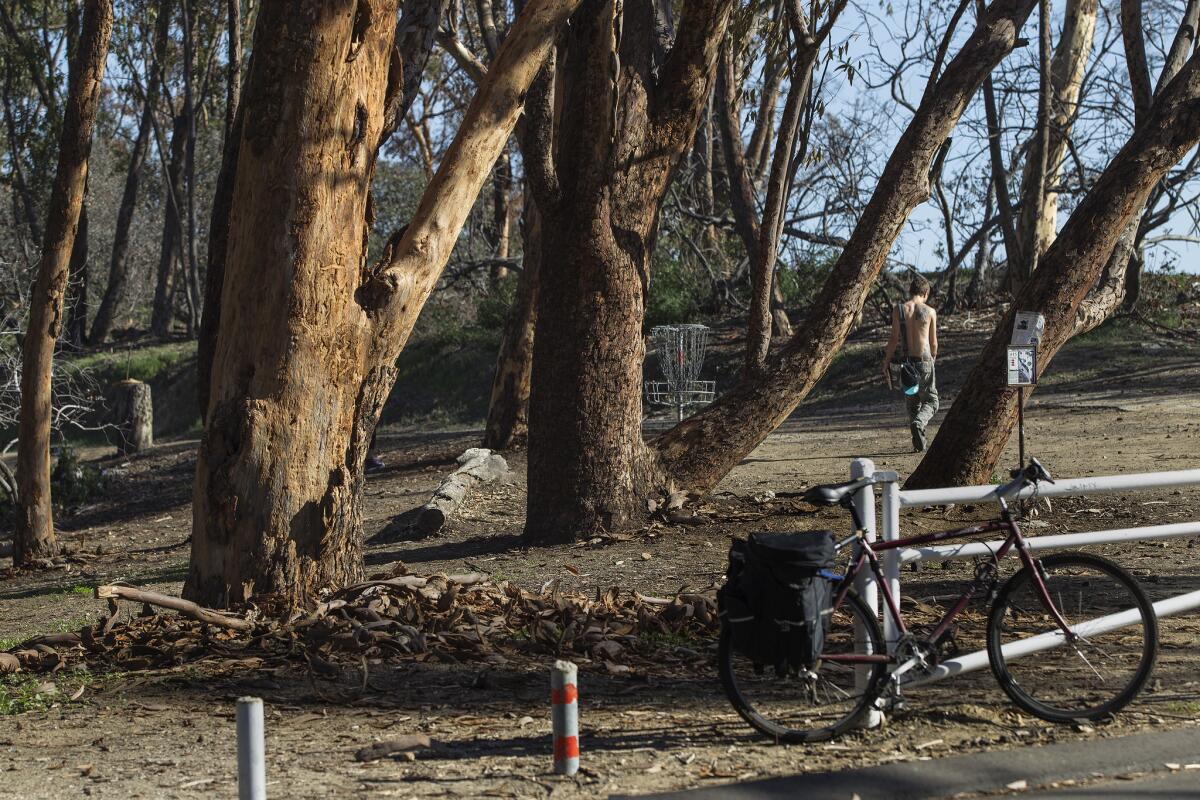Good news: Trees and other foliage have regrown, despite drought

Over the past year, scientists have studied California’s trees from the air, the ground and even using X-ray technology.
Each time, they have arrived at some version of a similar dreary conclusion: The state’s ongoing drought is wreaking havoc on forests, killing millions more trees at each check.
But a study published recently online in the Open Journal of Forestry offered a refreshing and counterintuitive piece of good news. A NASA research scientist found the drought did not stop trees, shrubs and other foliage from regenerating in areas ravaged by wildfires.
See more of our top stories on Facebook >>
“I think a lot of people were expecting that we’d see trees dying even in the Santa Cruz Mountains because the reservoirs there were really low. But they were pretty much undaunted by [drought] in their growth,” said Christopher Potter, the author of the study.
The continued greening in the Santa Cruz Mountains stands in stark contrast to the southern and central Sierra Nevada. Millions of trees have been decimated there by a bark-beetle infestation, which has been exacerbated by drought.
Potter, who works at NASA’s Ames Research Center in Moffett Field, said the research shows that “there’s no way to … just lump all the forests in the state together.” Drought will affect each one differently, and some more than others.
But as the hot summer months loom, Potter said there was also a downside to so much greenery.
“We have that much more fire fuel up in the mountains,” he said.
Potter’s study focused on forested areas of the Santa Cruz Mountains, paying special attention to the areas scorched by the 1985 Lexington fire and the 2008 Summit fire. Both of those blazes were followed by droughts in California, and Potter wanted to know if the water shortages affected how quickly vegetation in the charred areas grew back.
Using satellite imagery and indicators of “moisture stress,” Potter found that the density of live, green plant cover in the study area dropped significantly after the Lexington fire in 1985. Just four years later, however, the vegetation recovered to about 95% of what it had been before the blaze, despite a severe drought.
A similar pattern emerged after the 2008 Summit fire. Green plant cover dropped as a result of the fire, but then recovered to 88% of what it had been within seven years. California experienced two multiyear droughts over that span, which may have slowed, but did not stop the trees and shrubs from regenerating at impressive rates.
Though his study’s scope was limited to the Santa Cruz Mountains, Potter said the findings suggest that “even under the current conditions of warming, we haven’t reached a point yet where the coastal forests are not able to immediately regenerate and come back and fill in.”
That picture contrasts sharply with the dismal situation in much of the rest of the state.
The U.S. Forest Service estimates that more than 27 million trees died in 2015, shattering the record 3.3 million that died the year before. John Heil, a forest service spokesman, said results from a survey performed this month could arrive as soon as next week.
Experts say parts of the Sierra Nevada have been especially hard hit. Over several years, Potter said, the drought created “an environmental impact that was almost equivalent to burning the entire area.”
It was as if, in many of these areas, the equivalent of a wildfire burned very slowly over three years.
— Christopher Potter, author of the study
“It was as if, in many of these areas, the equivalent of a wildfire burned very slowly over three years,” Potter said. “It didn’t ignite, but burned it up in a very slow, no-smoke kind of way.”
The forests in the Sierra get very little moisture from the atmosphere, which Potter said helps explain why they fared worse than the forested parts of the Santa Cruz Mountains that he studied.
“There are many, many days when those forest areas and woodland areas are bathed in a nice blanket of fog,” Potter said of the coastal regions. “And while it may not give them a good soaking into the soil, it gives them a lot of relief.”
California’s forests are diverse, said Cal Fire spokesman Daniel Berlant, so “we see the impacts of drought and the severity vary from region to region.”
Although he acknowledged that the winter rains have allowed many trees to grow again, Berlant cautioned that the amount of water inside those trees “is still far less than it should be.”
“That’s a concern for us,” he said. “The less water that’s in the trees, the faster a fire is able to go from tree to tree.”
Officials have worried that the state got just enough precipitation for new vegetation to spring up and serve as fuel for a wildfire later this year.
The renewed greenery in the Santa Cruz Mountains, while welcome, could pose a similar problem.
“You’ve got sort of a reservoir of burnable material,” Potter said. And although it will be more difficult to ignite than dead wood in the Sierra, on certain hot and windy days, “whether it’s green or dead and brown, it will burn … and nothing’s going to stop it.”
ALSO
‘Did you call 911?’ Here’s how one man reached out to his rescuers
Many Haitians have been arriving in San Ysidro, hoping to get into the U.S.
L.A. will convert motel units to 500 apartments for homeless vets
Twitter: @ByMattStevens
More to Read
Start your day right
Sign up for Essential California for news, features and recommendations from the L.A. Times and beyond in your inbox six days a week.
You may occasionally receive promotional content from the Los Angeles Times.







